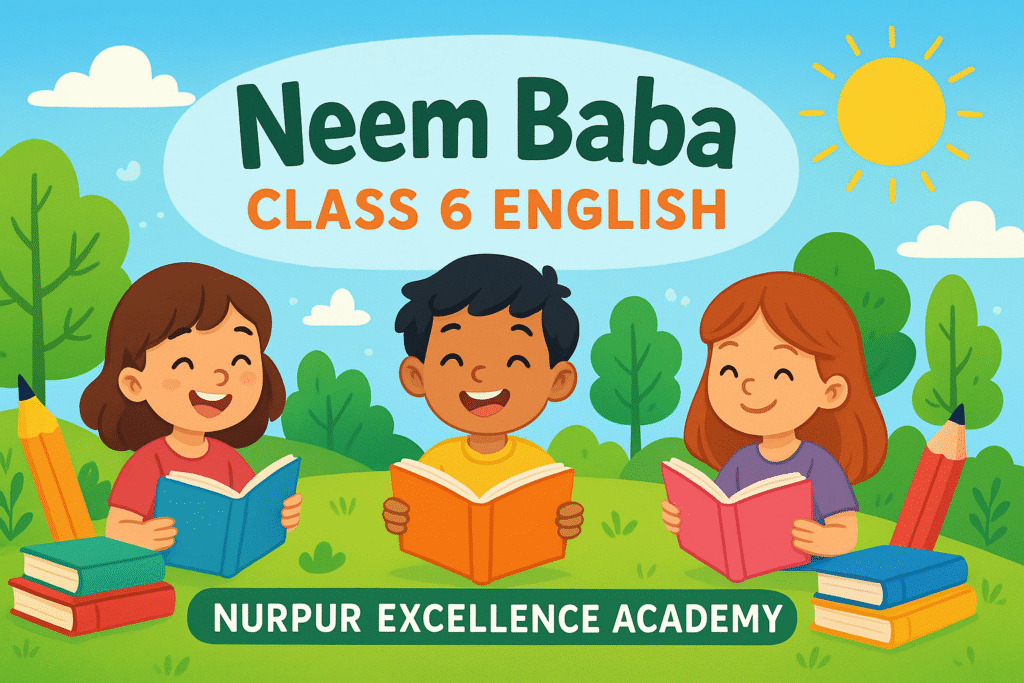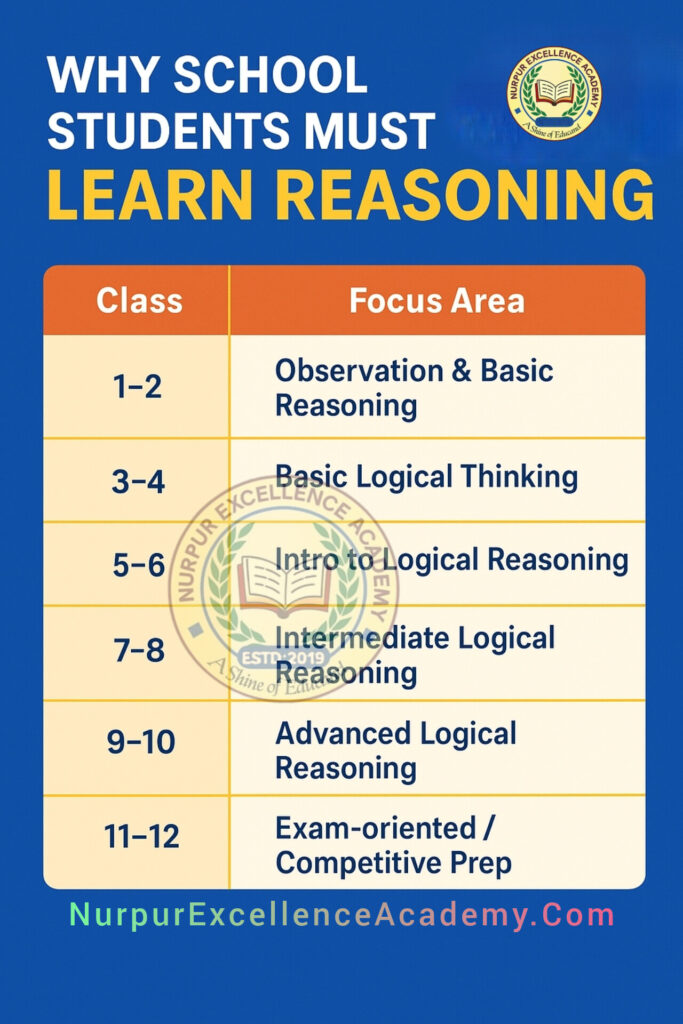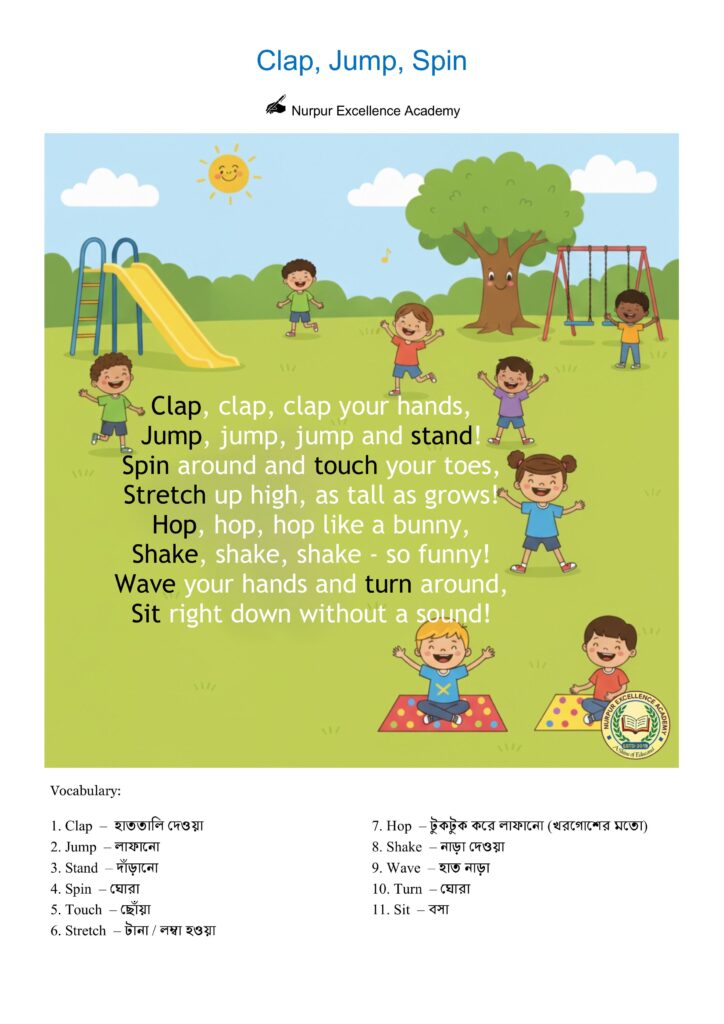Get the complete Class 6 English (Poorvi) Unit 3 – Neem Baba (Pages 75–84) Answer Key with all questions and solutions. Includes before reading, comprehension, think & reflect, vocabulary, grammar, listening, speaking, writing, and explore activities. Perfect for exam preparation, teachers, and parents.
✅ Neem Baba (Nurturing Nature) – Questions and Answers | Class 6 English Unit 3 | NCERT Solutions
📖
Unit 3 of the Class 6 English (Poorvi) book begins with a story titled “Neem Baba”. This lesson highlights the importance of neem, a sacred and medicinal tree in India. Through the story of a king, queen, villagers, and an old woman, the chapter teaches us about the healing powers of neem leaves and why trees are respected in Indian culture.
This blog provides the complete Answer Key for Pages 75–84 including all sections: Before Reading, Let us discuss, Think & Reflect, Learn, Listen, Speak, Write, and Explore.
🌿 Neem Baba : Story Overview
- Villagers respected the neem tree and called it “Neem Baba.”
- The king fell ill due to overeating.
- The queen discovered neem leaves cured an old woman.
- The king’s men became sick after cutting neem.
- Finally, the king ate neem leaves and became healthy.
- The queen gifted clothes to the old woman.
📖 Answer Key – Neem Baba
(Unit 3, Pages 75–84)
📍 Page 75 – Before Reading
Q1. Have you seen a neem tree? Describe it.
👉 Yes. A neem tree is tall with many small green leaves. Its taste is bitter but it is very useful.
Q2. Have you used neem in any form?
👉 Yes, neem toothpaste / neem oil / neem leaves in bath water.
Q3. Talk about any medicinal plant you know.
👉 Turmeric – it heals wounds and is used in food.
👉 Tulsi – it helps in cough and cold.
Q4. Do you know any plant that is worshipped in India?
👉 Yes, Tulsi, Peepal, and Banyan tree are worshipped.
📍 Page 78 – Let us discuss
Q1. Who is Neem Baba?
👉 The people of the village called the neem tree “Neem Baba.”
Q2. Why were the people of the village worried?
👉 Because the king had fallen ill.
Q3. Why did the king’s men not come near the neem tree?
👉 Because they believed Neem Baba was powerful and holy.
Q4. What happened when the old woman ate neem leaves?
👉 She became healthy and strong.
Q5. What was the gift from the queen to the old woman?
👉 A gift of clothes.
📍 Page 80 – Let us think and reflect
Q1. Circle the correct option:
- The neem tree was in the centre of the village.
- The king became ill because he ate too much food.
- The queen gave the old woman a gift of clothes.
Q2. Answer briefly:
- What did the people call the neem tree?
👉 Neem Baba. - How was the neem tree helpful?
👉 Its leaves had medicinal value and cured people. - What happened when the king’s men cut the neem tree?
👉 The men became sick and weak. - How did the king become healthy again?
👉 By eating neem leaves daily.
📍 Page 81–82 – Let us learn (Vocabulary & Grammar)
Q1. Opposites:
- ill × healthy
- hot × cold
- large × small
- many × few
- inside × outside
- old × young
- king × queen
Q2. Underline the correct word:
- much rice
- a few children
- a little oil
- many people
- a little water
Q3. Write sentences using “a few” and “a little”:
- I have a few friends in my class.
- Please put a little sugar in my tea.
Q4. Fill in the blanks:
- There are a few mangoes on the plate.
- We need a little salt in the dal.
- He bought a few books from the shop.
- Put a little milk in the tea.
- There are a few children in the garden.
📍 Page 83 – Let us listen
Q1. Names of four trees (from audio):
👉 Neem, Mango, Coconut, Banana.
Q2. Two uses of each tree:
- Neem – medicine, toothpaste.
- Mango – fruit, wood for furniture.
- Coconut – oil, food (water & kernel).
- Banana – fruit, leaves for plates.
📍 Page 84 – Let us speak
Q1. Talk about medicinal plants (sample):
👉 Neem cures skin diseases.
👉 Tulsi helps in cough.
👉 Aloe vera is good for hair and skin.
Q2. Short conversation (sample):
- A: Do you know neem is good for health?
- B: Yes, its leaves cure many illnesses.
- A: We should plant more neem trees.
- B: That’s true!
📍 Page 84 – Let us write
Q1. Collect pictures (answers will vary):
- Neem – cures skin diseases.
- Tulsi – helps in cough.
- Turmeric – heals wounds.
- Ginger – cures cold.
- Aloe vera – good for hair and skin.
Q2. Short paragraph (sample, 60 words):
The Neem Tree
The neem tree is a tall tree with small green leaves. Its leaves taste bitter but they are very useful. Neem cures many illnesses like fever, cough, and skin diseases. People also use neem twigs as toothbrushes. In India, people respect and worship neem. It is a true gift of nature.
📍 Page 84 – Let us explore
Q1. Trees worshipped in India:
👉 Peepal, Banyan, Tulsi, Neem.
Q2. Proverbs about trees (examples):
- “Save trees, save life.”
- “A tree is known by its fruit.”

🌟
The story “Neem Baba” beautifully shows the connection between people, nature, and health. Neem is not just a tree, it is a healer and protector. Through this lesson, children learn the value of medicinal plants, the wisdom of villagers, and the importance of respecting trees.
This Class 6 English (Poorvi) Unit 3 Answer Key (Pages 75–84) will help students prepare for exams, while also inspiring them to care for nature. Teachers and parents can also use it as a complete guide for classroom learning.
👉 Message: Trees are life – protect and respect them.



Leave a Reply